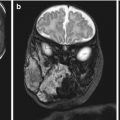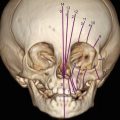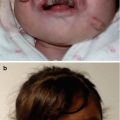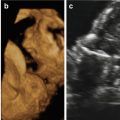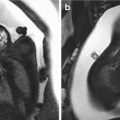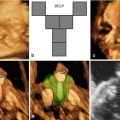Fig. 15.1
Three-dimensional ultrasound at 16 weeks 5 days of gestation in the axial plane (a) and surface rendering mode (b) demonstrating an exophytic midline lesion originating from the brain and protruding through the nasal cavity
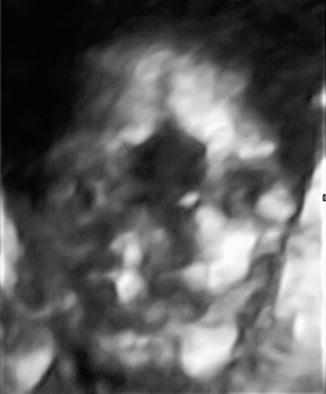
Fig. 15.2
Three-dimensional (3D) ultrasound in the coronal plane using “skeleton” mode: a midline fronto-ethmoid bony defect was clearly detected and rendered
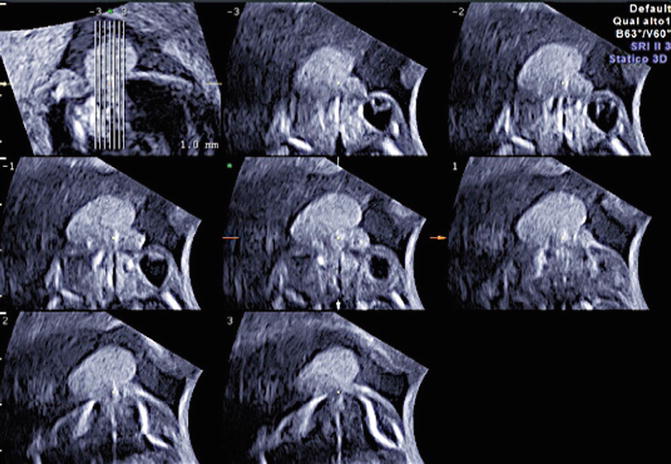
Fig. 15.3
Three-dimensional ultrasound using tomographic ultrasound imaging (TUI) in the coronal plane with slice thickness of 1 mm: a hyperechogenic tumor with undefined contour is seen projecting anteriorly through the nasal cavity. Severe hypertelorism was an associated finding
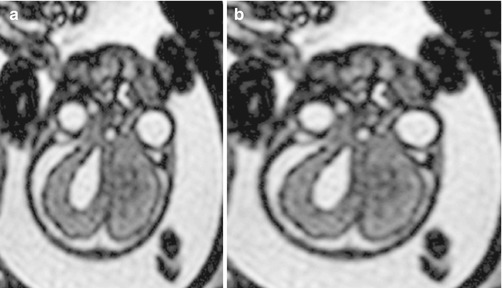
Fig. 15.4
(a, b). Fetal T2-weighted MRI at 19 weeks 5 days of gestation showed the homogeneous hyperintense lesion with corresponding heterogeneous hyperintense signal on T2-weighted images
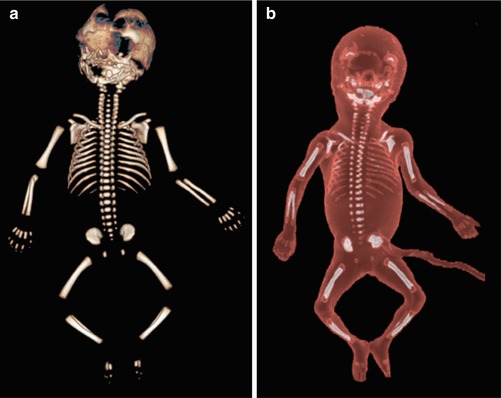
Fig. 15.5
(a) Postmortem CT scan with (b) 3D rendering confirming the prenatal US findings of fronto-ethmoid bony defect
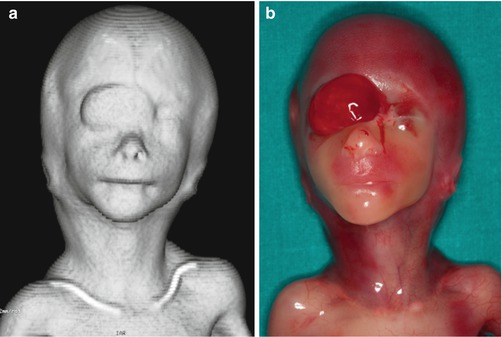
Fig. 15.6
(a) Postmortem CT scan with 3D rendering and (b) gross pathology
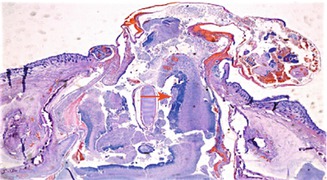
Fig. 15.7




Neuropathology confirmed the presence of neural tissue within the tumor (arrow)
Stay updated, free articles. Join our Telegram channel

Full access? Get Clinical Tree


